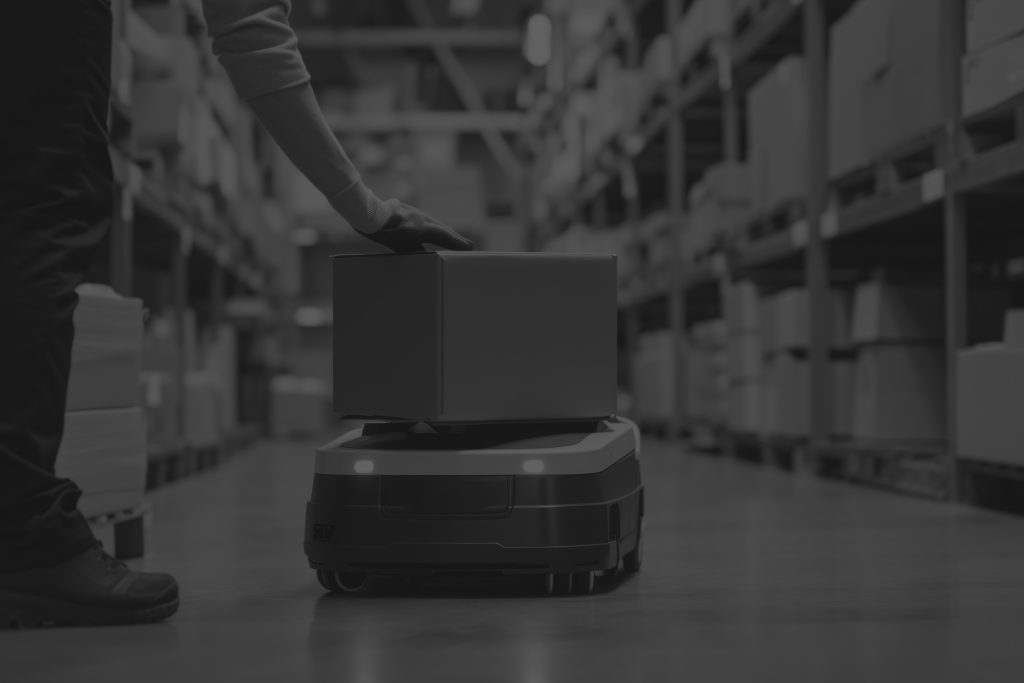The Future of Sustainable Packaging: Innovations and Impact.

In a world where consumer preferences and corporate responsibility are increasingly intertwined, sustainable packaging stands out as a crucial area of focus. Addressing both environmental concerns and supply chain efficiency, the innovations in sustainable packaging offer promising solutions to some of the most pressing challenges today.
The Importance of Sustainable Packaging.
Sustainable packaging is more than a trend; it’s about cutting down our environmental impact. As people become more aware of waste and the problems with single-use plastics, both consumers and companies are looking for greener, more efficient options. This blog looks into the newest sustainable packaging solutions and why they matter now.
Current Challenges in Packaging.
Traditional packaging, especially plastics, has been a major cause of environmental damage. These materials frequently end up in landfills and oceans, harming ecosystems. The Ellen MacArthur Foundation reports that if we don’t change our ways, by 2050, the ocean could have more plastic than fish by weight.
The Carbon Footprint of Packaging
Packaging also plays a substantial role in the overall carbon footprint of products. Manufacturing, transportation, and disposal of packaging materials contribute to greenhouse gas emissions. It is estimated that packaging accounts for about 5% of all energy used in the value chain of a product.
Waste Management Issues
Disposing of packaging that can’t be recycled contributes to waste management problems. Throwing away packaging that can’t be recycled causes waste issues. Some materials, like polystyrene foam and certain plastics, don’t break down easily. They can stay in the environment for a long time.
Innovations in Packaging and Sustainability
Leading-edge technologies and materials are revolutionising the packaging industry, making it more sustainable and efficient. From biodegradable options to recyclable plastics, here are some of the most exciting advancements:
Biodegradable Packaging
Biodegradable materials like plant-based plastics and kraft paper break down naturally, which helps lessen their impact on the environment. NatureWorks is one company that makes Ingeo biopolymer from plant sugars, and it can be composted.
Recyclable Plastics
Advances in recycling technology now allow some plastics to be recycled many times without degrading. Loop Industries, for example, has developed a way to break down PET plastics into their basic elements, making them endlessly recyclable.
Reusable Packaging
Reusable packaging solutions are gaining traction, particularly in the food and beverage industry. Loop, a global platform, partners with major brands to offer products in durable, reusable containers, which customers can return for refills.
Sustainable Packaging Examples
Materials come in various forms, each catering to different needs and industries. Here’s a closer look at some common types:
Sustainable Food Packaging
Food packaging has seen significant innovations, with materials like edible packaging and biodegradable films becoming popular. Companies like Notpla are creating seaweed-based packaging, which is compostable and edible.
Cardboard Boxes
Cardboard is a popular choice for eco-friendly packaging because it can be recycled and breaks down easily. New advancements include using natural materials to make cardboard water-resistant, making it a flexible option for different products.
Plant-Based Materials
Packaging made from renewable resources like corn starch, bamboo, and sugarcane is not only sustainable but also functional. These materials break down naturally and can often be composted, fitting well with the idea of a circular economy.

Impact on Supply Chain Efficiency.
Sustainable packaging isn’t just beneficial for the environment and offers advantages for supply chain efficiency. Here’s how:
Streamlining Operations
Supply chains can become more efficient by cutting down on the weight and size of packaging, which means lower shipping costs and fewer emissions. Innovations like air pillows and biodegradable packing peanuts are good examples.
Reducing Costs
Companies can save money by using reusable packaging instead of single-use packaging. This works best in closed-loop supply chains, where packaging can be returned, cleaned, and used again.
Challenges and Benefits
While the initial investment in sustainable packaging solutions may be higher, the long-term benefits often outweigh the costs. Businesses can achieve cost savings through reduced waste disposal fees, improved brand reputation, and compliance with environmental regulations.
Consumer Perception and Behaviour.

Consumers now really care about sustainability when they buy things. Brands that use eco-friendly packaging can win over and keep customers who think green.
Making an Impact on What People Buy: A Nielsen survey showed that 66% of people worldwide are happy to spend more on products that are good for the environment. Brands that make a big deal about their green efforts can stand out and build a loyal customer base.
How to Talk About It: For eco-friendly packaging to really make a difference, brands need to be clear and engaging when they talk about it. Using straightforward labels, sharing stories that grab people’s attention, and teaching customers why sustainable packaging matters can make people see the brand in a better light.
Future Trends and Predictions.

The future of sustainable packaging looks promising, with continuous innovations and growing adoption across industries. Here are some trends and predictions:
Smart Packaging.
Smart packaging, like QR codes and NFC tags, gives customers details about a product’s lifecycle, boosting transparency and trust. They also assist in managing inventory and cutting down on waste.
Circular Economy.
The circular economy approach aims to eliminate waste and keep materials in use, and it’s set to transform the future of packaging. More companies will move towards closed-loop systems, where packaging gets reused, recycled, or composted.
Regulatory Support.
Countries worldwide are creating rules to help with sustainable packaging. The European Union has a Circular Economy Action Plan and the United States has the Save Our Seas Act. These are efforts to cut down on plastic waste and encourage sustainable practices.
Sustainable Packaging in the UK.
The UK is at the forefront of sustainable packaging, thanks to tough laws and increasing consumer demand. Its commitment to lowering environmental impact has sparked innovative efforts and policies.
Government Regulations and Policies.
The UK government has introduced strict rules to reduce plastic waste and encourage sustainable packaging. The Plastic Packaging Tax focuses on packaging made with less than 30% recycled material to reduce the use of new plastics.
The UK government has set strict rules to reduce plastic waste and promote sustainable packaging. The Plastic Packaging Tax targets packaging with less than 30% recycled material to decrease the use of new plastics. The Extended Producer Responsibility (EPR) scheme requires producers to manage their packaging’s lifecycle and encourages the use of eco-friendly materials.
Innovative Companies and Solutions.
British companies are coming up with creative sustainable packaging solutions. Start-up Flexi-Hex has developed a plastic-free, paper-based alternative for protecting fragile items like glass bottles. DS Smith, a global packaging company based in the UK, focuses on recyclable packaging and has introduced Circular Design Principles to ensure their products can be recycled or reused.
Retail and Consumer Goods.
Major UK retailers and consumer goods brands are increasingly adopting sustainable packaging. Supermarkets like Tesco and Waitrose are cutting down on plastic by offering products in compostable or recyclable packaging. Unilever UK aims to make all its plastic packaging reusable, recyclable, or compostable by 2025.
Recycling Infrastructure.
The UK is improving its recycling system to better deal with sustainable packaging. Local governments are putting money into better recycling tech and more collection programs. Veolia, a company focused on recycling and waste management, is building new facilities to make recycling more efficient and promote a circular economy.
The UK’s active efforts in sustainable packaging are an example for other countries. It proves that when governments, businesses, and consumers work together, real environmental progress can be made.
Conclusion.

Moving towards sustainable packaging is essential for the future of our planet and businesses. The future of our planet and businesses needs to use sustainable packaging. This can be achieved by using new materials and technologies to reduce environmental impact. Additionally, it can help make supply chains more efficient and meet the demands of eco-friendly consumers.
Both consumers and businesses have a role to play in this transformation. By prioritising sustainable packaging, we can collectively drive positive change and pave the way for a more sustainable future.
If you want to be more sustainable, check out companies like Zara that use eco-friendly packaging. Let’s make a difference together, one package at a time.
Frequently Asked Questions.
Sustainable packaging refers to the use of materials and processes that have a minimal impact on the environment. This can include packaging that is recyclable, compostable, or made from renewable resources. The goal is to reduce waste and ensure that packaging materials can be part of a circular economy.
Yes, many governments have introduced regulations to promote sustainable packaging. Examples include the UK’s Plastic Packaging Tax and Extended Producer Responsibility (EPR) schemes, as well as the European Union’s Circular Economy Action Plan. These regulations aim to reduce plastic waste and encourage the use of recyclable materials.
Sustainable packaging can enhance a company’s brand image, meet growing consumer demand for eco-friendly products, and comply with regulatory requirements. It also has the potential to improve supply chain efficiency and reduce long-term costs associated with waste management and resource procurement.